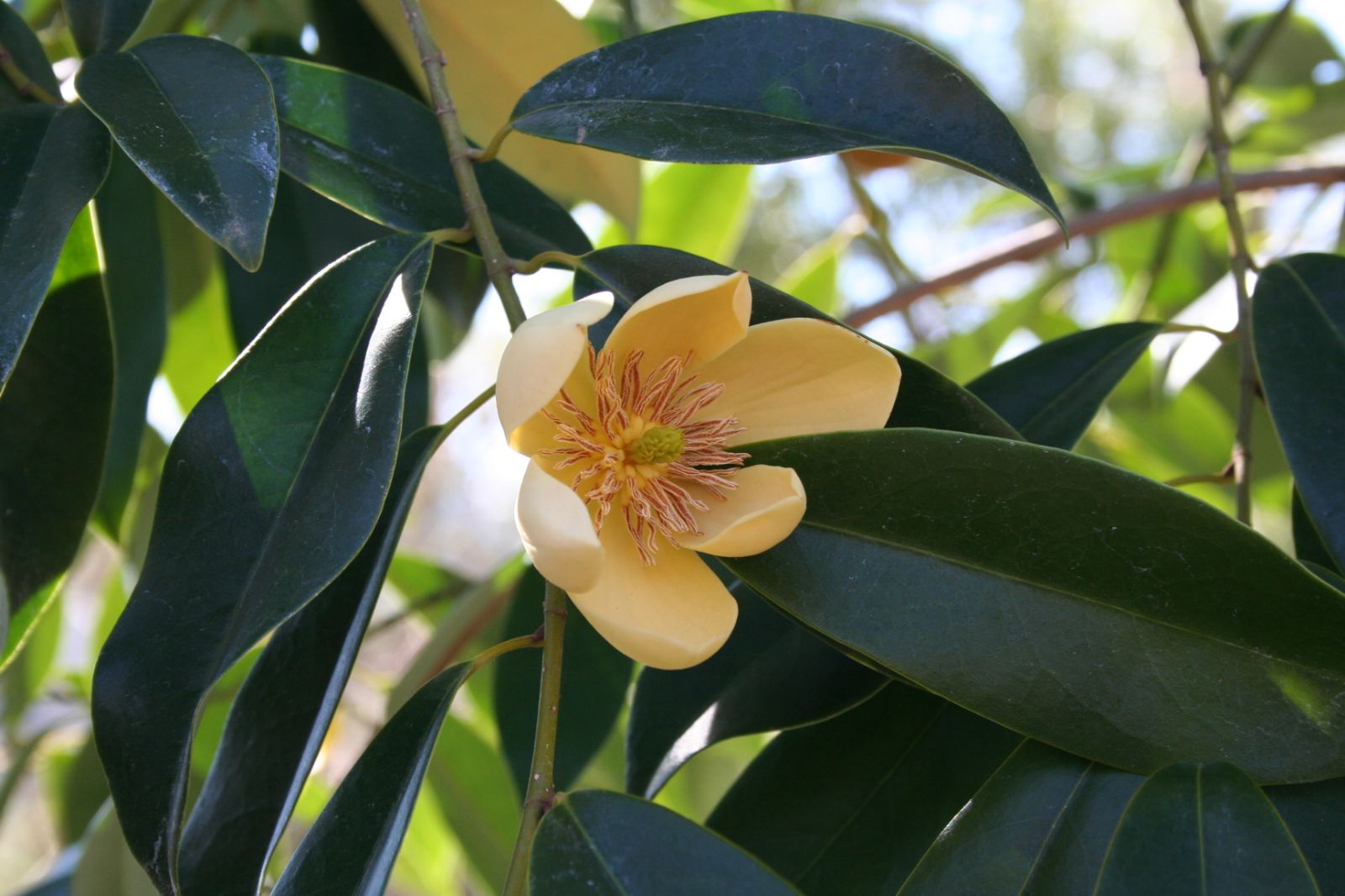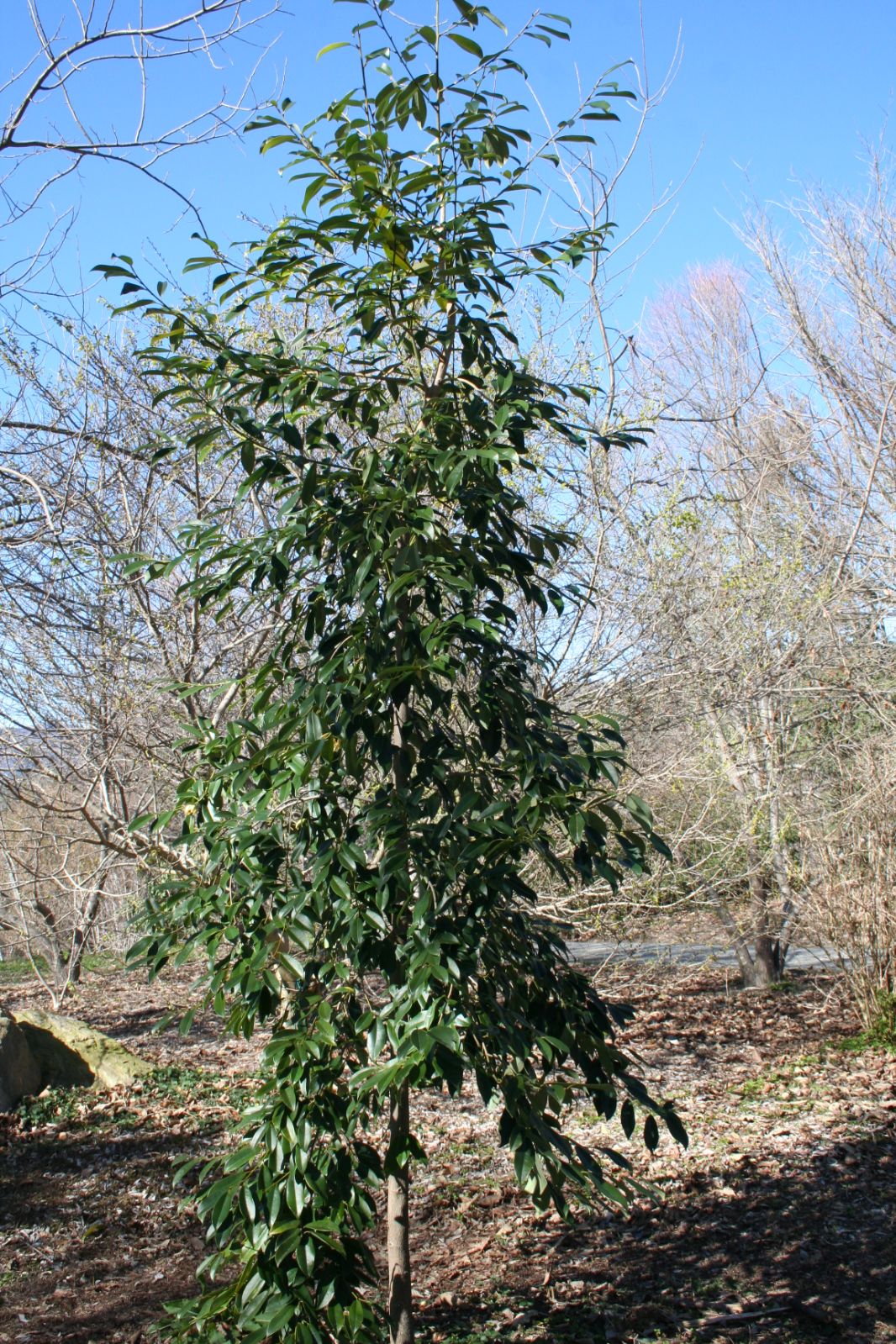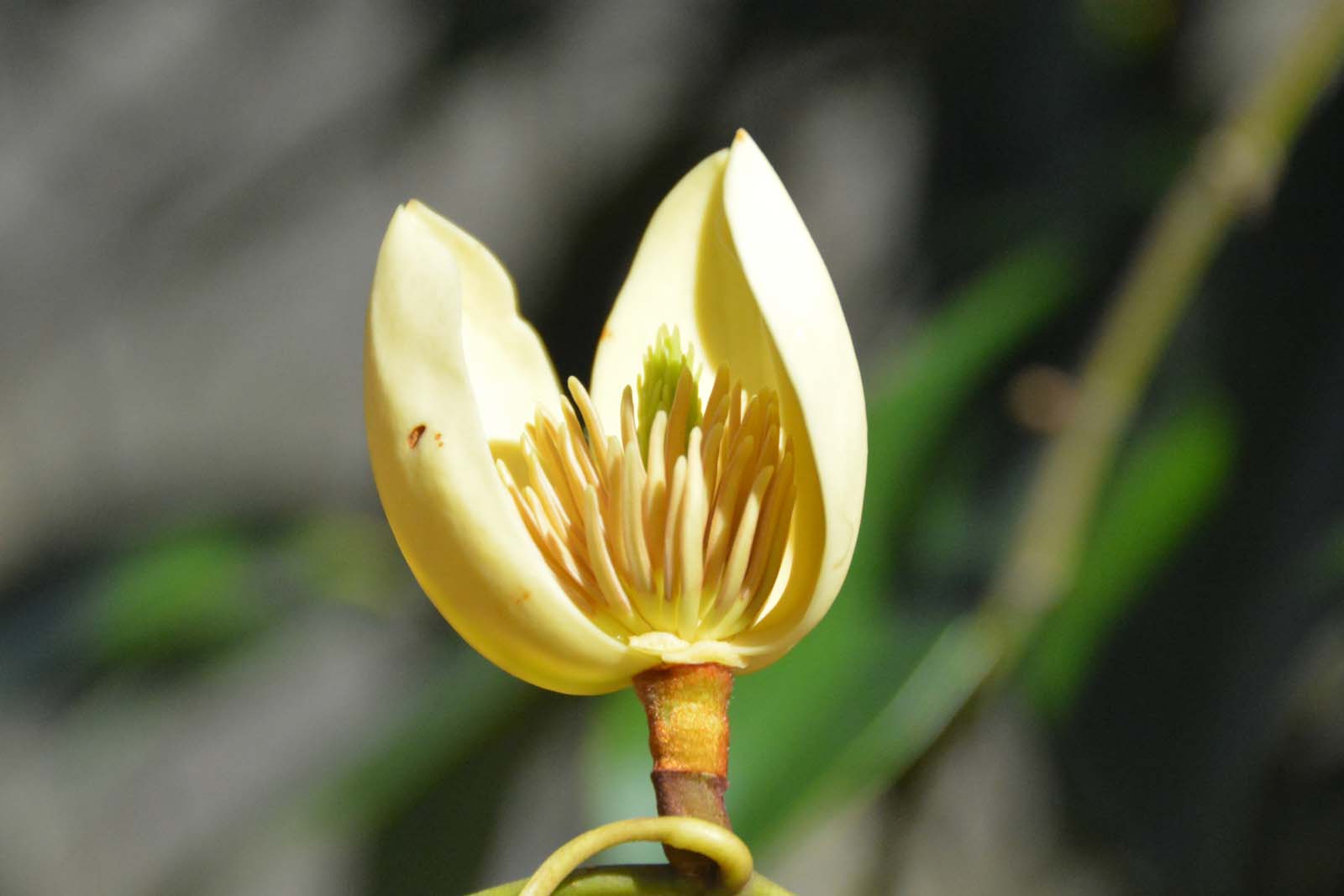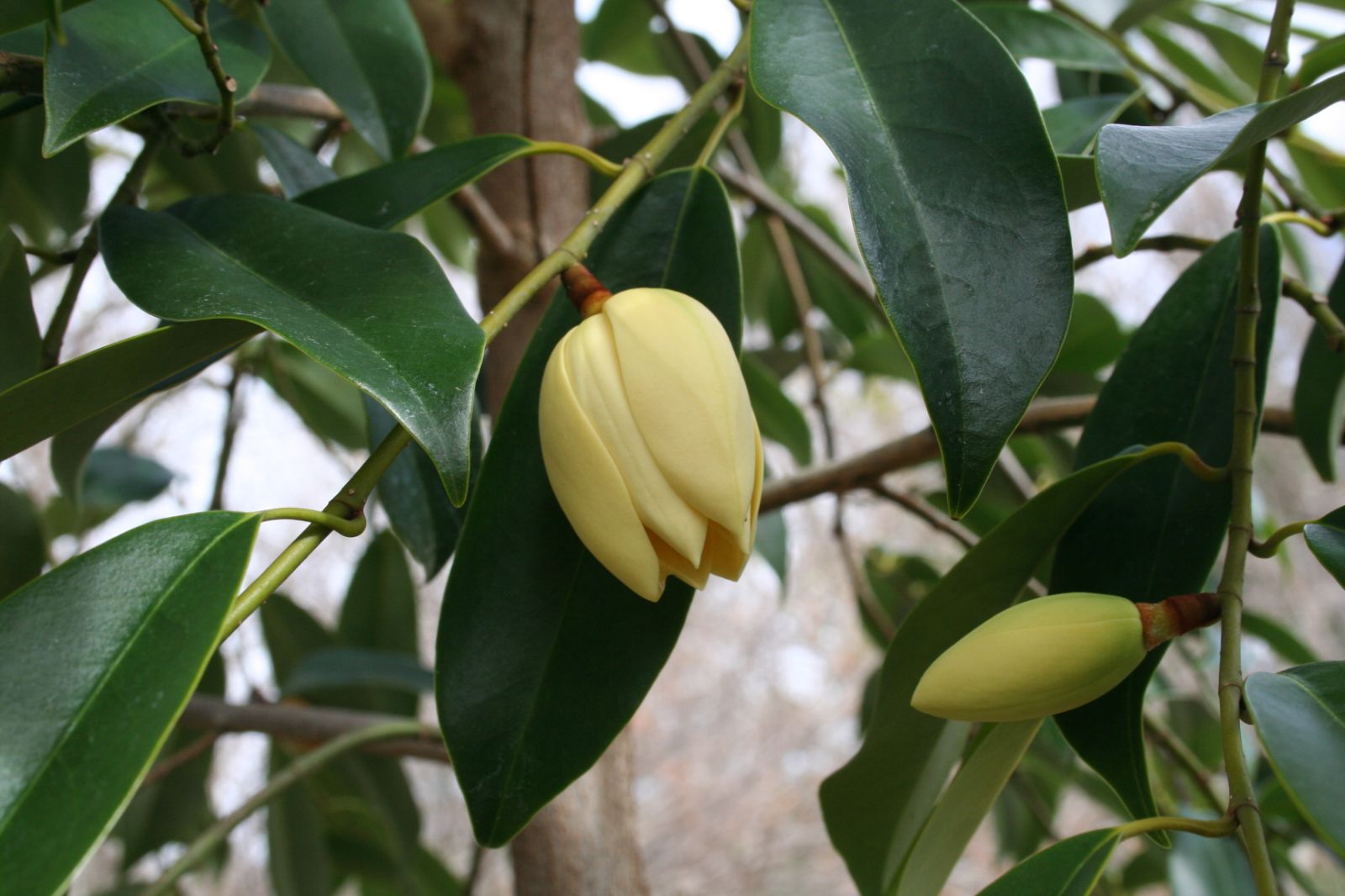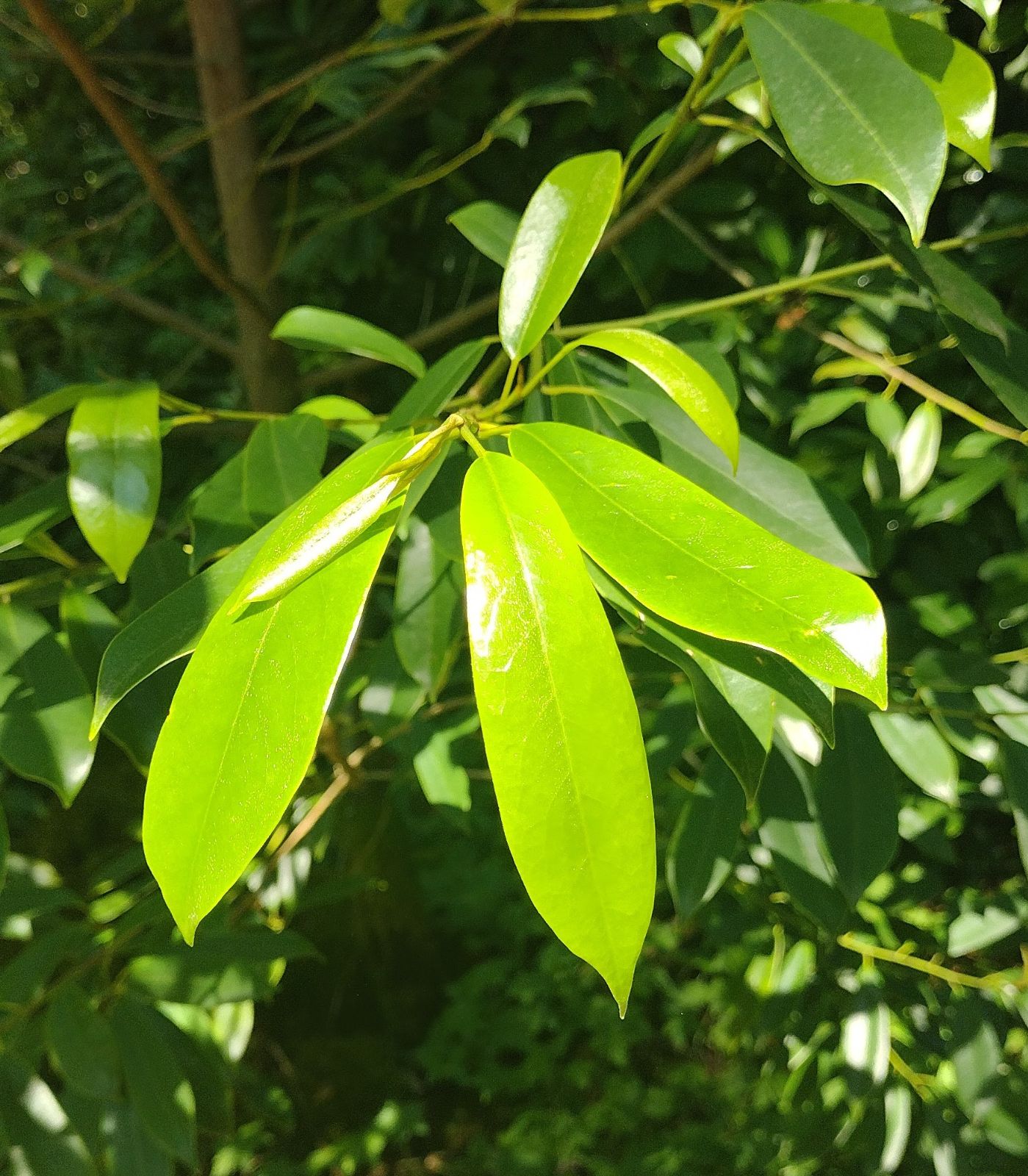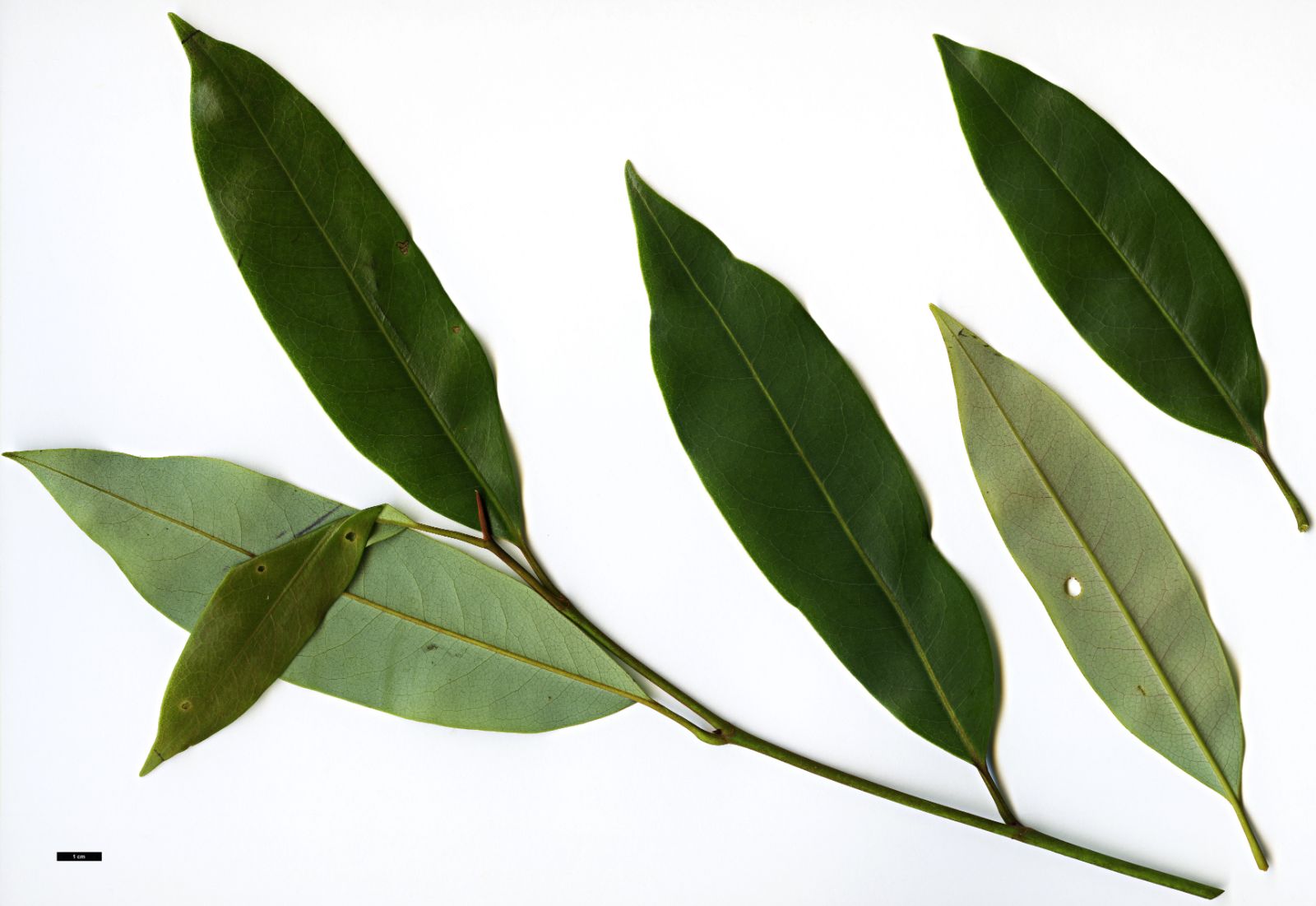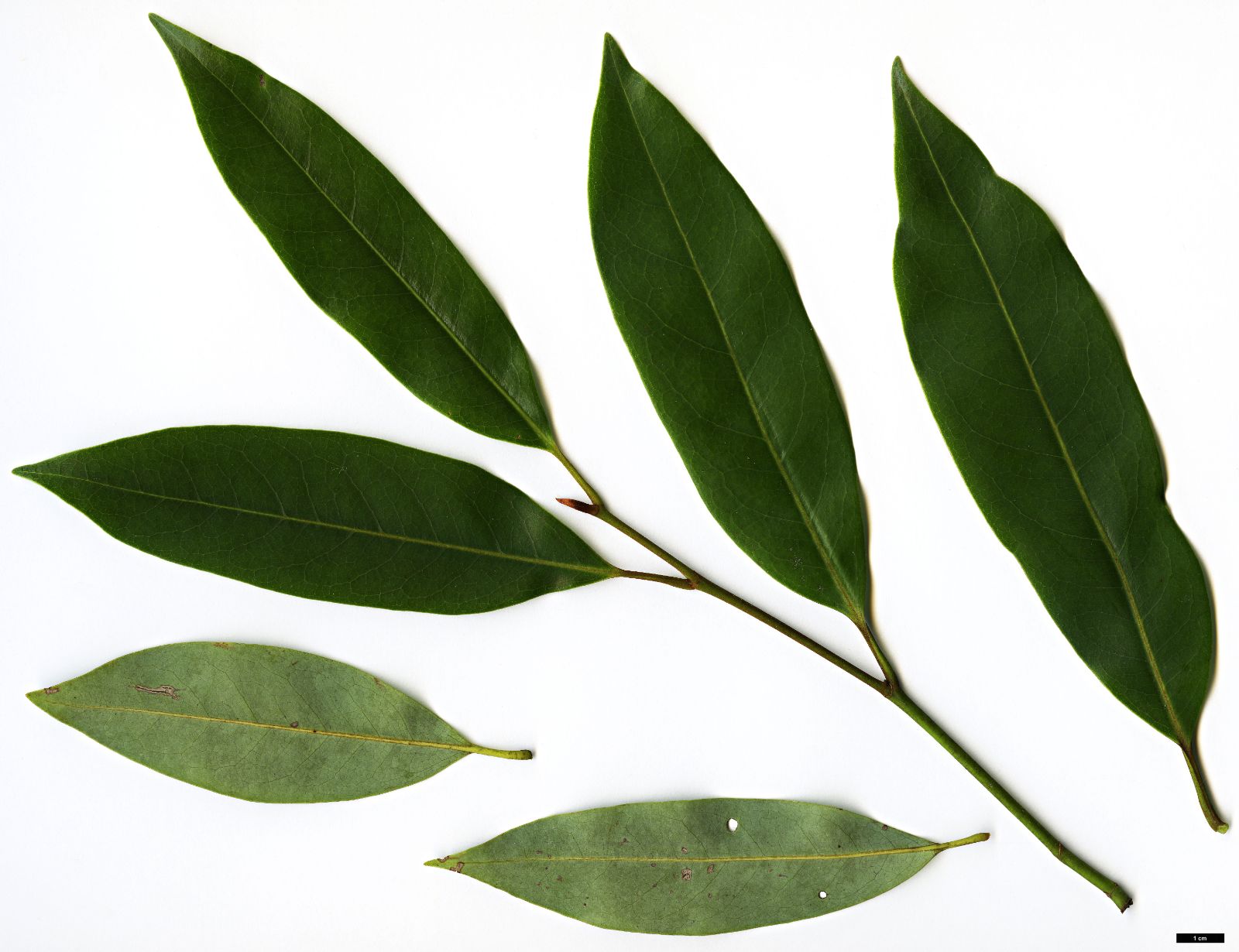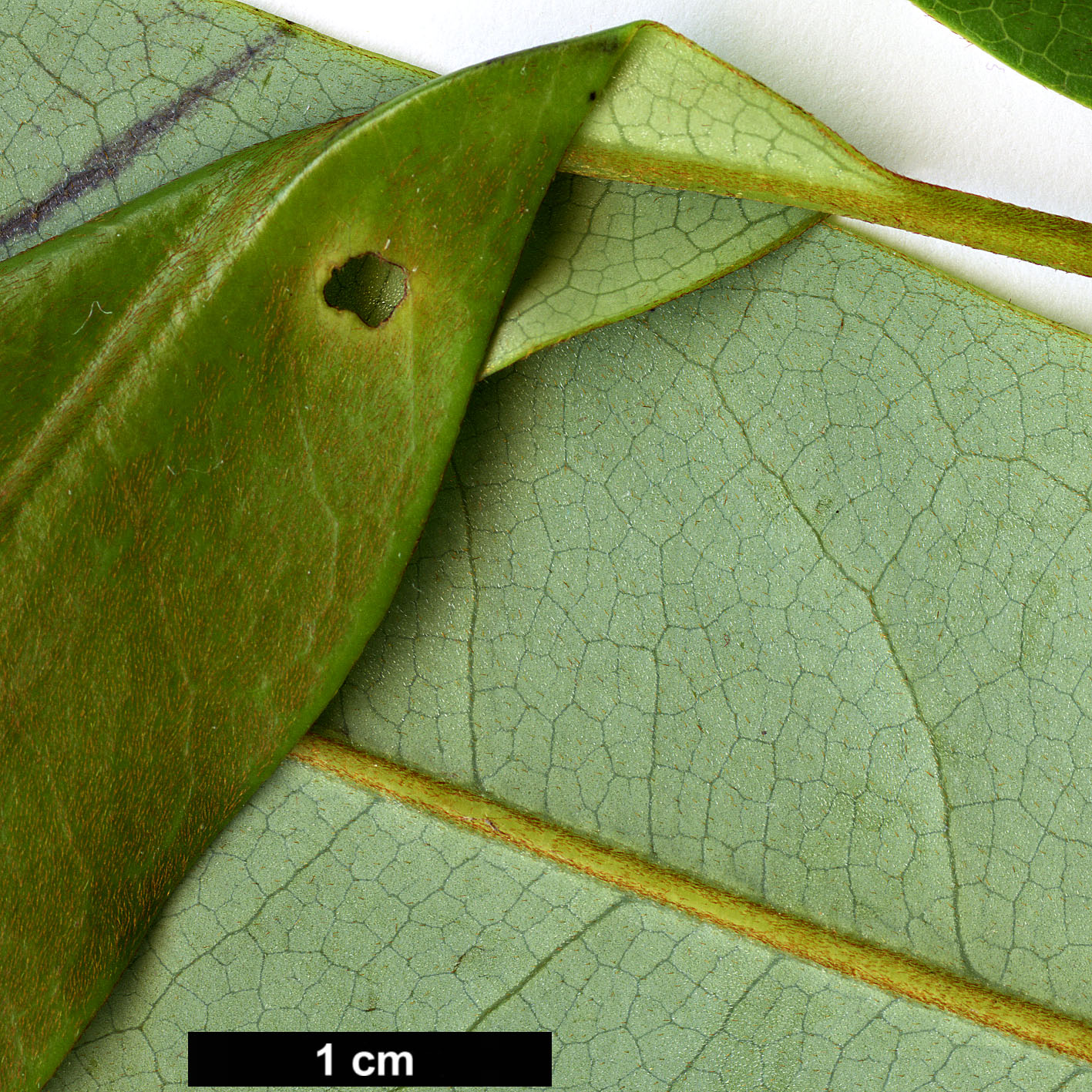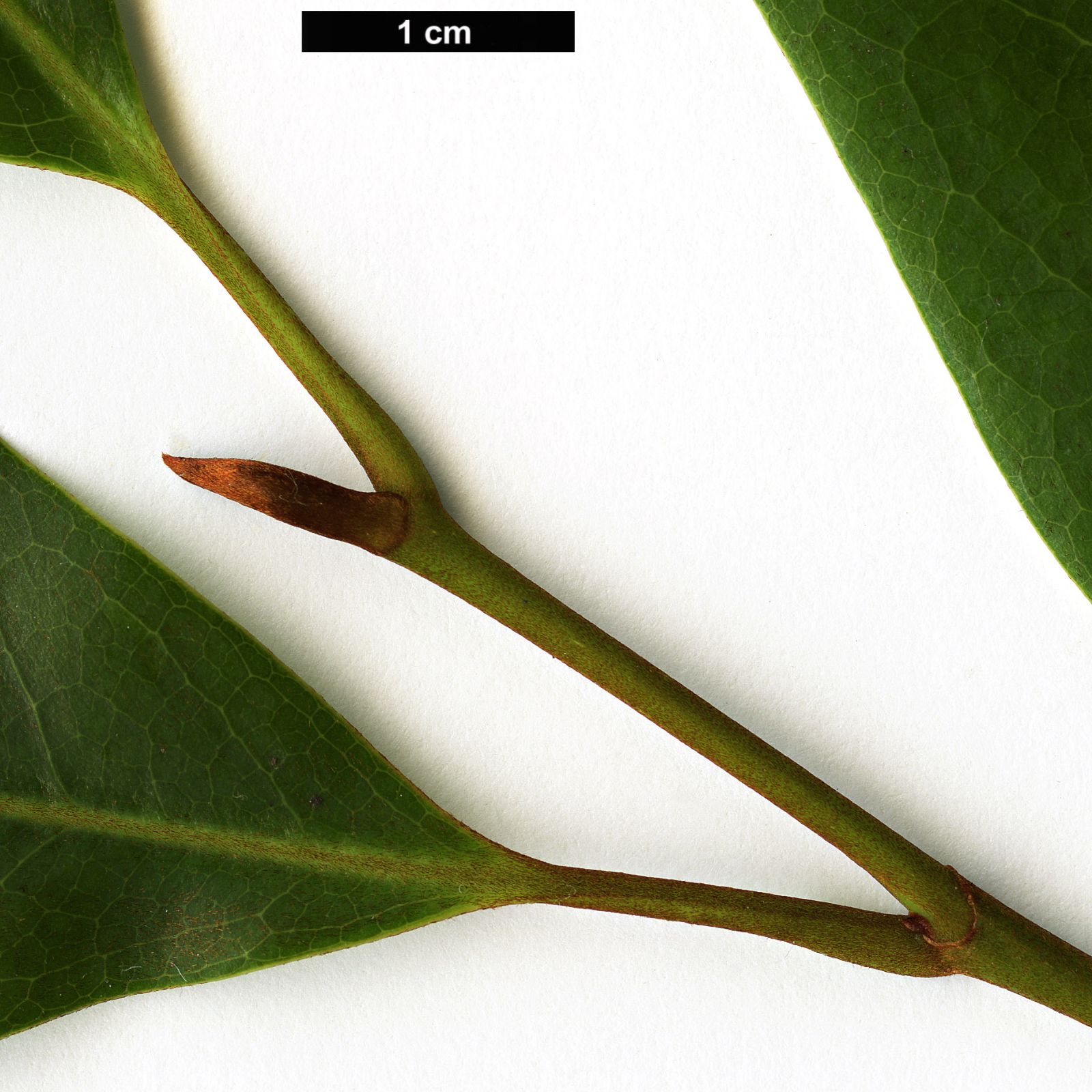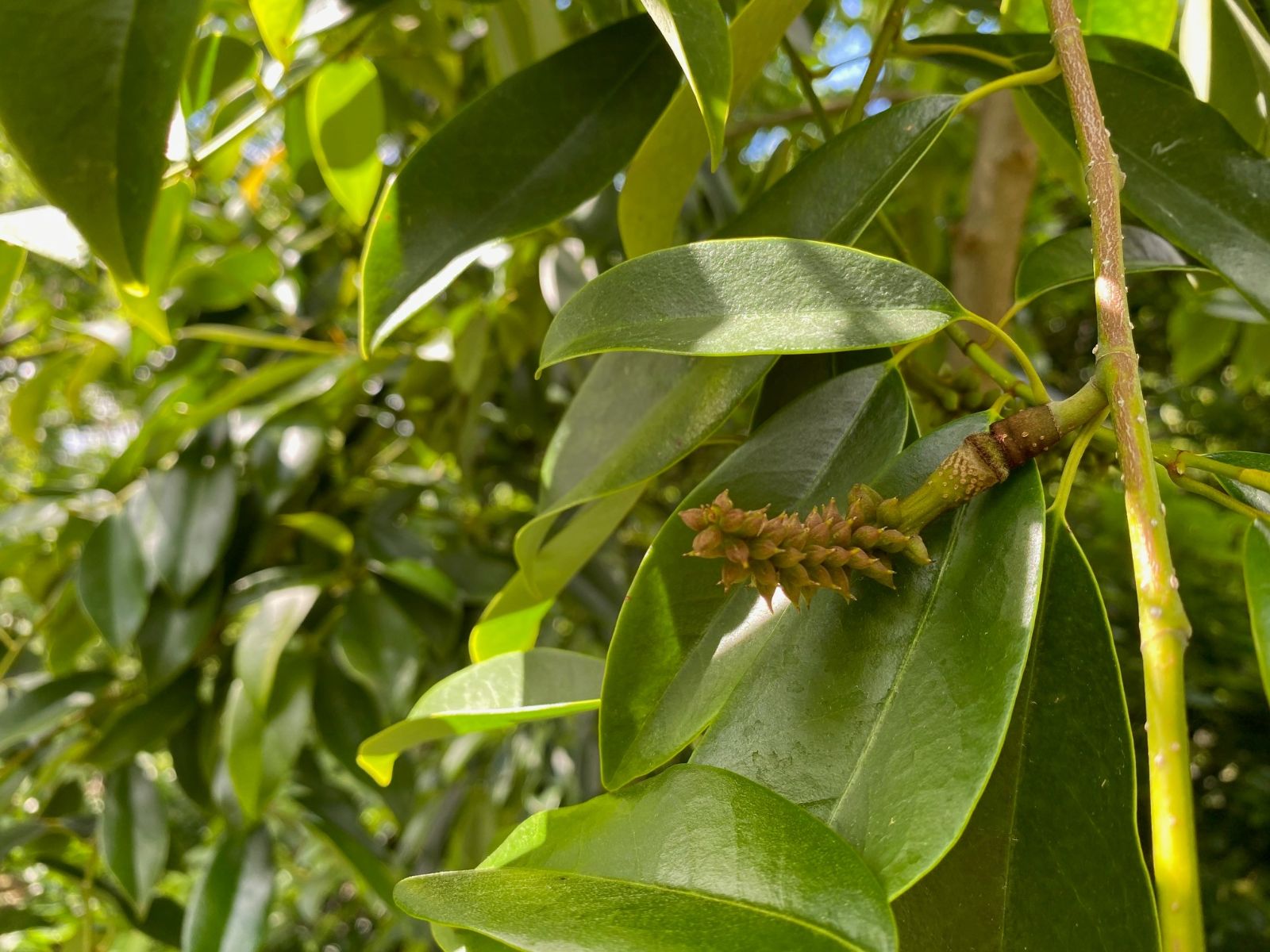Magnolia leveilleana
Sponsor
Kindly sponsored by
The Roy Overland Charitable Trust

Credits
Richard B. Figlar & Julian Sutton (2022)
Recommended citation
Figlar, R.B. & Sutton, J. (2022), 'Magnolia leveilleana' from the website Trees and Shrubs Online (treesandshrubsonline.
Genus
- Magnolia
- Section Michelia
Common Names
- chang bing han xiao
Synonyms
- Michelia leveilleana Dandy
- Michelia longipetiolata C.Y. Wu ex Y.W. Law & Y.F. Wu
- Michelia chongjiangensis Y.K. Li & X.M. Wang
Other taxa in genus
- Magnolia acuminata
- Magnolia × alba
- Magnolia amabilis
- Magnolia amoena
- Magnolia aromatica
- Magnolia biondii
- Magnolia × brooklynensis
- Magnolia campbellii
- Magnolia cathcartii
- Magnolia cavaleriei
- Magnolia caveana
- Magnolia champaca
- Magnolia changhungtana
- Magnolia chapensis
- Magnolia compressa
- Magnolia conifera
- Magnolia Cultivars A
- Magnolia Cultivars B
- Magnolia Cultivars C
- Magnolia Cultivars D
- Magnolia Cultivars E
- Magnolia Cultivars F
- Magnolia Cultivars G
- Magnolia Cultivars H–I
- Magnolia Cultivars J
- Magnolia Cultivars K
- Magnolia Cultivars L
- Magnolia Cultivars M
- Magnolia Cultivars N–O
- Magnolia Cultivars P
- Magnolia Cultivars Q–R
- Magnolia Cultivars S
- Magnolia Cultivars T
- Magnolia Cultivars U–V
- Magnolia Cultivars W–Z
- Magnolia cylindrica
- Magnolia dandyi
- Magnolia dawsoniana
- Magnolia de Vos and Kosar hybrids
- Magnolia decidua
- Magnolia delavayi
- Magnolia denudata
- Magnolia doltsopa
- Magnolia duclouxii
- Magnolia ernestii
- Magnolia figo
- Magnolia floribunda
- Magnolia × foggii
- Magnolia fordiana
- Magnolia foveolata
- Magnolia fraseri
- Magnolia fulva
- Magnolia globosa
- Magnolia × gotoburgensis
- Magnolia grandiflora
- Magnolia grandis
- Magnolia Gresham hybrids
- Magnolia guangdongensis
- Magnolia hookeri
- Magnolia insignis
- Magnolia Jury hybrids
- Magnolia × kewensis
- Magnolia kobus
- Magnolia kwangtungensis
- Magnolia laevifolia
- Magnolia lanuginosa
- Magnolia liliiflora
- Magnolia × loebneri
- Magnolia lotungensis
- Magnolia macclurei
- Magnolia macrophylla
- Magnolia martini
- Magnolia maudiae
- Magnolia nitida
- Magnolia obovata
- Magnolia officinalis
- Magnolia opipara
- Magnolia × proctoriana
- Magnolia × pruhoniciana
- Magnolia rostrata
- Magnolia salicifolia
- Magnolia sapaensis
- Magnolia sargentiana
- Magnolia sieboldii
- Magnolia sinensis
- Magnolia sinica
- Magnolia sinostellata
- Magnolia × soulangeana
- Magnolia sprengeri
- Magnolia stellata
- Magnolia tamaulipana
- Magnolia × thomsoniana
- Magnolia tripetala
- Magnolia × veitchii
- Magnolia virginiana
- Magnolia × wieseneri
- Magnolia wilsonii
- Magnolia xinganensis
- Magnolia yunnanensis
- Magnolia yuyuanensis
- Magnolia zenii
Small to medium evergreen tree, to 15 m tall and 30 cm dbh. Young twigs slender, 2–3 mm in diameter, more or less appressed-pubescent with ferruginous or rufous hairs especially at first; buds narrowly ovoid, ~1 cm long, densely rufous-pubescent; stipules glabrous to rufous-tomentose, free from the petiole (or appearing so). Leaf blade broadly to narrowly obovate, small, 7.5–10.5(–13) × 2.8–3.8(–4.5) cm, thinly coriaceous; upper surface dark green, lower surface pale green, both surfaces somewhat pubescent when young; secondary veins 6–10 on each side of the midvein, reticulation inconspicuous especially beneath; petioles 1.5–3 cm long, minutely pubescent with same ferruginous hairs. Flowers pseudo-axillary (terminal on short axillary shoots), ~7–8 cm across; tepals (4–)6(–7), creamy white to pale yellow, 3–4.5 × 1–2 cm, the 2 or 3 outer tepals oblong to narrowly elliptic-oblong, the inner tepals spathulate; stamens many, persistent to the androphore during male phase,1.4 cm long, filaments pale green/yellow, 4 mm long, anthers yellowish becoming red-brown after dehiscence, ~9 mm long; peduncles stout, ~8 mm long, densely rufous-hairy. Fruit 7–9 cm; ripe carpels 7–12(–20), each longitudinally dehiscent (thus, completely two-valved); ovules more than 12 per carpel. Flowering March (Sonoma Valley, California), fruiting September–October (Guizhou). (Xia, Liu & Nooteboom 2008; Chen & Nooteboom 1993).
Distribution China Guizhou, Hubei, Hunan, Yunnan
Habitat Forests, 1000–1500 m.
USDA Hardiness Zone 7b-9
RHS Hardiness Rating H4
Conservation status Data deficient (DD)
A cream- or yellow-flowered member of Section Michelia, this is a forest tree endemic to south-central China. Beyond a series of brief taxonomic treatments leading to the current delineation of the species (Chen & Nooteboom 1993), it hardly figures in the scientific literature. Little is known about its status in the wild and any threats it might face (Rivers et al. 2016). Dandy’s specific epithet commemorates French botanist and former missionary-medic A.A. Hector Léveillé, who described it from a 1908 collection made by Julien Cavalerie as Michelia cavaleriei H. Lév. (this proved to be an invalid name, the specific epithet having already been used for another plant, see Magnolia cavaleriei (Finet & Gagnep.) Figlar). A single introduction has given it a small place in North American collections.
Magnolia leveilleana was collected in a remnant section of virgin hardwood forest at Leigongping, a foothill adjacent to the larger mountain Leigongshan, SE Guizhou, in October 2012 by Steve Hootman, Tom Hudson, Kelly Dodson and Sue Milliken (CDHM 14653). The parental tree was a mature 20 m specimen laden with open orange-red fruit (Far Reaches Farm 2022). Following tentative identification as Magnolia glaucophylla, (which has stipules adnate to the petiole, unlike the Leigong plant in which they are free), Yong-Kang Sima of the Yunnan Institute of Forestry identified it as M. leveilleana based on morphology and provenance, without entirely ruling out M. martini, which also has 6-tepalled flowers. However, Richard Figlar (pers. obs.) notes that the Leigong magnolia has much smaller leaves of 7.5–10 cm long (versus 12–18 cm in M. martini); rufous appressed pubescent twigs, petioles etc. (versus glabrous in M. martini); filaments pale greenish-yellow (versus red or purple in M. martini) and thinner branchlets of 2–3 mm diameter (versus 4–5 mm in M. martini). In addition, Chen & Nooteboom (1993) cite a Leigongshan collection among the voucher specimens of M. leveilleana they examined.
Planted in 2014, probably the oldest and largest example of M. leveilleana in Western cultivation grows at Sonoma (formerly Quarryhill) Botanical Garden, CA. It first flowered in 2019 and was several metres tall in 2020. It has a pleasing columnar form, but little is yet known about the effectiveness of its floral display or other garden merits. Other young examples of M. leveilleana can be found at Tregrehan, Cornwall (2 accessions, each about 1.5 m in 2021) and a 3.5 m specimen at Magnolian Grove Arboretum, SC (R. Figlar pers.obs.). Kelly Dodson of Far Reaches Farm in coastal Washington State has reported that plants at Port Townsend have experienced temperatures as low as –12°C without damage. This would place M. leveilleana among the more cold-hardy michelia species in cultivation. It has been offered commercially in North America (Far Reaches Farm 2022).


